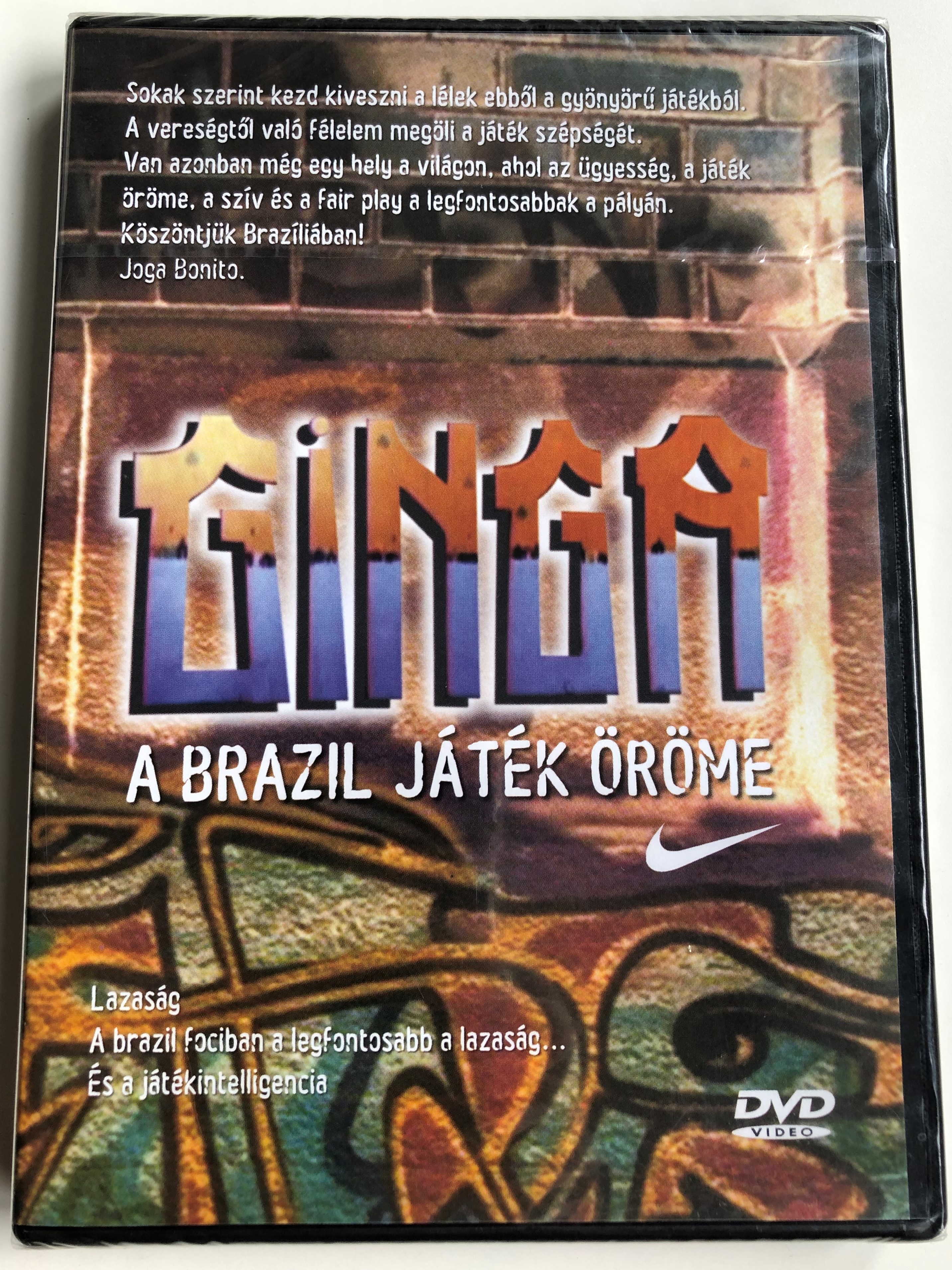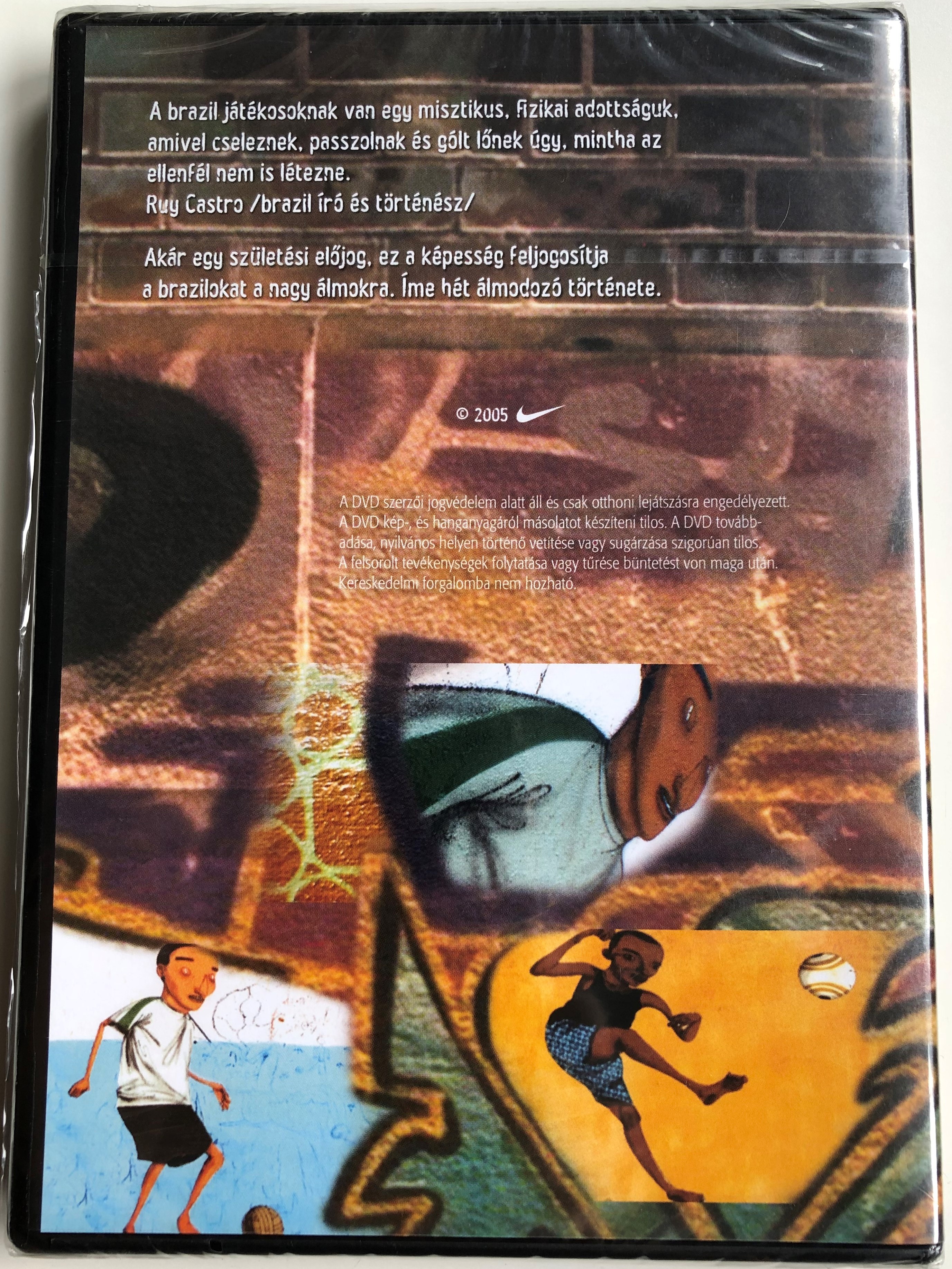Description
Ginga: The Soul of Brasilian Football DVD 2005 Ginga - A brazil játék öröme / Directed by Tocha Alves / Hosts: Wallace da Silva Guilherme, Wesclay Conceução de Oliveira, Hank Levine
UPC 5996255717754
MADE IN EU
REGION 2 PAL DVD
AUDIO: Portuguese 2.0
Subtitles: English
TOTAL RUNTIME: 80 MINUTES
English Summary:
Brazil's great secret for dominating world football is hardly a secret at all. Brazilian football players have 'ginga' - a fluid style of movement that raises ball skill to an art form. Ginga is not just restricted to dribbling, passing and scoring, and its not just about football; it's about celebrating what you're doing, not taking life too seriously and looking stylish at all times. This funky, dynamic, sexy documentary, produced by Fernando Meirelles (Director City of God), explores the lives of several Brazilian football players from very different social backgrounds and parts of Brazil. Their compelling stories complement a portrait of Brazil as a unique, fascinting culture, where no matter how tough life can be, there'll always be lots of music, dancing and the finest football. ...Ginga
Hungarian Summary:
A brazil játékosoknak van egy misztikus fizikai adottságuk amivel cseleznek,passzolnak és gólt lőnek úgy, mintha az ellenfél nem is létezne.
Ronaldo, Ronaldinho, Romario, Cafu, Roberto Carlos - a felsorolást a végtelenségig folytathatnánk. A brazil foci talán nem is sport, hanem életstílus, amelyben legfontosabb a lazaság és a játékintelligencia. Testtel az egyik irányba, a labda a másik irányba - nincs megállás. A Ginga olyan titok, amelynek minden brazil a birtokában van...
Sokak szerint kezd kiveszni a lélek ebből a gyönyörű játékból. A vereségtől való félelem megöli a játék szépségét. Van azonban egy hely a világon, ahol az ügyesség, a játék öröme, a szív és a fair play a legfontosabbak a pályán. Köszöntjük Brazíliában!
The ginga (pronounced jeen-gah; literally: rocking back and forth; to swing) is the fundamental footwork of capoeira. Its constant triangular footwork makes capoeira easily recognizable as well as confusing since it looks much more like a rhythmic dance step than an orthodox static fighting stance. Only a few martial arts employ similar rhythmic footwork found in the ginga. South Korea's Taekkyeon and some forms for Pencak Silat are a few others.
The main purpose is not dancing but rather to prepare the body for any number of movements such as evading, feinting, or delivering attacks while continuously shifting stances all while providing confusion. The ginga places the capoeirista in constant motion, making them a frustrating target for a forward-advancing opponent,. The ginga also allows the capoeirista to continuously maintain enough torque to use in a strike while providing a synchronization of arm movement to avoid and slip under attacks. The ginga is not static so its speed is usually determined by the toque or rhythm dictated by the bateria.
Capoeira Angola and capoeira regional both have distinctive versions of this movement. In Capoeira Angola, the ginga is more expressive and individualistic, while in Capoeira Regional the ginga has a more structured and defensive look. Most Capoeira regional academies teach the ginga in the same way until the student advances to a certain level and begins to develop their own expressive and comfortable way of using it.

























